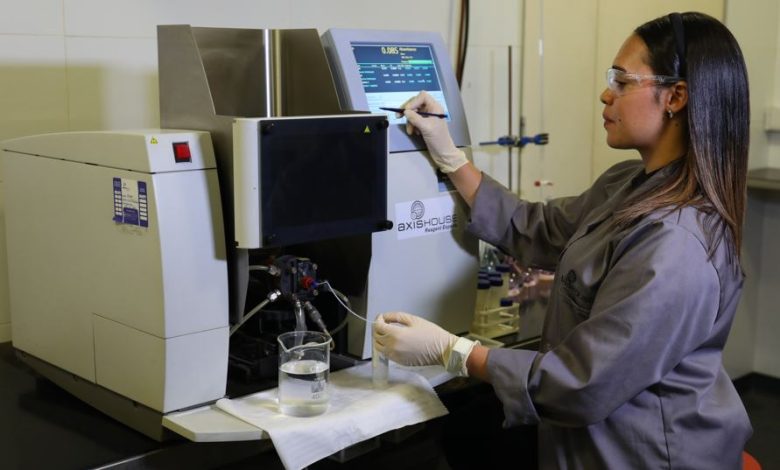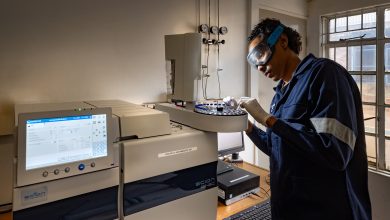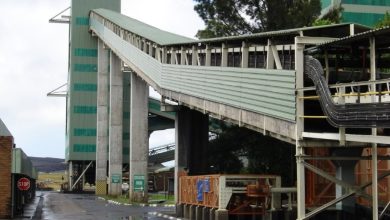
Axis House is laying the foundation for more effective operations, including ESG-friendly alternatives to cyanide and reagents developed for greater selectivity.
For centuries, cyanide has been considered the ‘go-to’ reagent for various mineral processes. As calls mount for the mining industry to become more responsive from an ESG (Environmental, Social and Governance) perspective, it’s time for companies to consider less hazardous solutions.
This is no easy task, explains Bernard Oostendorp (Technical Manager) of Axis House, a supplier and manufacturer of reagents to the mining industry. “For one thing, it requires a change of mindset –cyanide salts have been used for so long they are an entrenched part of the industry. There’s a reason for this: the material is outstandingly effective at leaching gold from ore, and it’s just as effective when applied as a zinc depressant in lead-zinc flotation circuits.”
The challenge, then, lies in finding an alternative that achieves similar results; but is safe to use when it comes to the transportation, handling and disposal of effluent – a task which has occupied much of Axis House’s efforts for the past three years.
These endeavours have proved fruitful, reports Oostendorp, with Axis House identifying three products that can be applied as alternatives to cyanide: D20-M3, Revadep 150 and Revadep 226. “Take D20-M3 for example: we have tested its abilities as a gold leaching agent at various operations, and found that it consistently compares favourably against sodium cyanide,” Oostendorp says. Importantly, however, it contains only 10-14% cyanide, which means that cyanide levels in effluent are reduced to 30% of the levels achieved with cyanide, making it easier to treat and dispose of. This has earned the product a ‘low hazard’ ranking.
Revadep150 and Revadep 226, thatare used for zinc depression in polymetallic flotation, have delivered similarly impressive results. Both products are cyanide free and effective even at half the dose of cyanide, when used with the traditional zinc sulphate co-depressant. As a further benefit, the lower dosage and improved zinc depression translate into better reactivation of zinc minerals in the downstream zinc circuit.
Moving the industry forward
Oostendorp reveals that all three products have been well received by products following laboratory testing. “We are now at a point where we can conduct plant trials,” he informs. These are set to take place during the remainder of the year. “We are extremely pleased to be able to prove that there are products out there that negate the need for cyanide. In the case of D20-M3, cyanide levels are well below 20-50ppm in effluent (the point at which effluent is considered safe for discharge), while the use of Revadep 150 and Revadep 226 entirely removes the use of cyanide from the zinc depression process – directly in contrast with the trend towards rising cyanide and effluent levels, which increase annually.”
What makes these products different, Oostendorp continues, is that they are efficient throughout the process. “There is no disputing the efficiency of cyanide – so, instead of trying to create a product that does its job more effectively, we focused on products that improve efficiencies, because this removes the need to treat effluent. Residual cyanide levels are consistently low: in the case of D20-M3, this figure stands at below 30%, a drastic improvement on the residue left by sodium cyanide, while the Revadep products leave zero cyanide residue.
A commitment to research and development
Oostendorp explains that Revadep 150 and Revadep 226 represent the culmination of several years’ work. The company had already developed a range of depressants, including depressants for sulphide minerals, and spent several years honing its understanding of reagents which are able to depress and float various sulphides before introducing these products, which are based on the chemistry types of preceding products. Revadep 150 and Revadep 226 are able to act as depressants when introduced in typical lead circuits operating at a pH level between 8 and 9. Plus, because their molecular weights are higher than that of sodium cyanide, we find that a lower dose can be used.
Oostendorp admits that the development of these products has taken a significant investment in time and research. “All our reagent development starts at the Axis House laboratory, where we evaluate the individual performance of all products as well as their performance in conjunction with other reagents.” Further tests are conducted to understand the full extent of the product’s applicability, especially when working with a specific ore or mineral type. “We test parameters such as optimum dosage, dosage point and process pH to ensure that the product is successful at plant scale,” Oostendorp says.
He adds that because specialised collectors are developed to be mineral specific, lower dosages can be applied without compromising grade and recovery – in fact, in most cases, these are improved. This stands in stark contrast to the commodity type collectors which are traditionally used in sulphide flotation, like xanthates. Once a specialised collector has been identified, Axis House follows a similar process to develop frothers and depressants which are able to improve the separation of valuable from gangue minerals.
Finally, after extensive laboratory testing, the product is approved for full scale application. At this point, the Axis House technical team meet onsite to apply the product at the client’s site. “These steps are critical to ensure that the product is successful when applied at full scale, but they also provide an opportunity for the technical team to gain more understanding about how the newly developed products should be applied to ensure optimal efficiency.”
Customisation: the ultimate answer to client needs
Axis House’s thorough process is rooted in the company’s understanding that every client is unique, and that each faces unique problems. “These problems are always the point of departure when developing a product,” Oostendorp explains. “Imagine, for instance, a client is experiencing low recoveries and high reagent consumption. We’d first look at why this is happening. Once we have the answer to this question, we can start to develop and implement our own reagent solution; a process which entails detailed laboratory test work followed by plant trials – all backed by the onsite support of our technical team.” Once the product has been commercialised, Axis House continues to visit the client’s site regularly in order to see if there are any possible areas for improvement. “Our approach is rooted in partnership: we believe in working alongside our clients to help them achieve their goals.”
This partnership sees Axis House working closely with clients to gain insight into their processes – important, because a lack of knowledge in this area may impact on the reagent’s ultimate performance. “We try to mitigate the risk of underperformance through thorough testing,” Oostendorp says, referring back to the many tests that products undergo before application at the client’s site – including trials under various conditions, to help the organisation understand how the product affects the process. When the time for plant trials arrives, Axis House’s technical team is accompanied by a group of experienced metallurgists, resulting in a lower probabilityof underperformance. “We find that engaging our technical team is very helpful for clients, because the team understands how changes to certain parameters will affect the performance of the product, and what corresponding changes need to be made.” A stringent quality control process is also critical to ensure that products meet technical standards, and is a further safeguard against potential under performance.
The philosophy in action
Oostendorp cites the example of Axis House’s recent work with a zinc processing plant to demonstrate the company’s holistic approach. “During our first plant visit, our metallurgical team identified multiple areas for improvement: for example, the xanthate collector in use was not very selective, and consequently allowed the build up of high levels of sulphide gangue in the concentrate, causing crud formation on the concentrate thickener. This lowered the quality of the overflow water, which was reused in the plant.”
Axis House’s solution? “After we tested the company’s ore, we introduced a collector which was highly selective towards the zinc minerals to be recovered. This collector was effective at half the dosage of xanthate previously used, while the improved selectivity lowered the gangue reporting to the concentrate – and so the thickener efficiency improved, too.” Axis House also developed a specialised frother, which was customised onsiteand had a positive impact on both consumption and the flotation circuit, helping to boost selectivity, culminating in overall improved performance for the entire plant.
Axis House further helped the plant reduce cyanide levels in the entire process by replacing the cyanide depressant previously in use with Redvedep 226. With cyanide levels now reduced to zero, overflow water from the tailings thickener could be reused, while process waste could be disposed to the tailing dam without further treatment. The company also identified a more effective flocculant, that yields clearer thickener and faster settling rates.
Axis house continues to conduct test work and site optimisation, to allow for changes to the mine’s ore type and feed mineralogy. By addressing these problems one at a time, we were able to help the plant increase overall process efficiency.
Looking forward: The power of specialisation
This case study highlights the many advantages of specialised products. “Remember that specialised reagents are usually developed to be mineral specific, and are highly selective towards the minerals in question. Traditional commodity type reagents can produce acceptable performance, but specialised reagents carry far more benefits, from improved selectivity to better recovery rates, increased grade and low hazards. What’s more, specialised reagents also address the issue of declining feed grade experienced through the life of the mine, making the processing of these ores more profitable. If you were to conduct an overall economic evaluation of the entire process you’d find that specialised reagents return better results.”
The world is changing and the emphasis on ESG responsibilities is growing by the day. “There has never been a better time to review your processes and find alternatives that are not only kinder to the environment and the communities you serve, but that also have a positive impact on your processes,” Oostendorp concludes.






